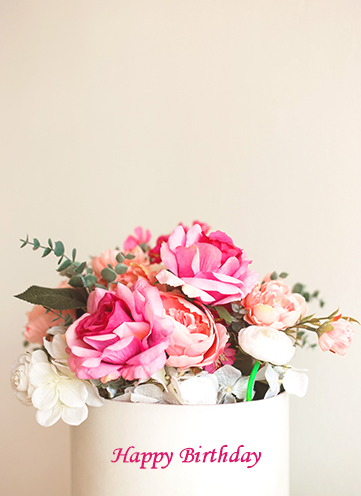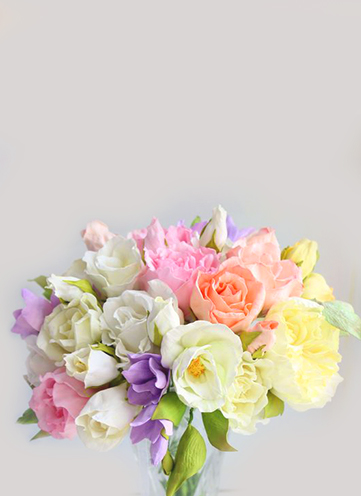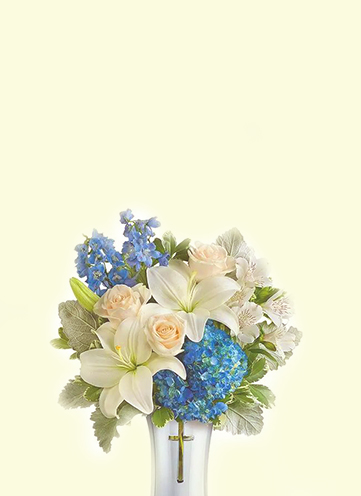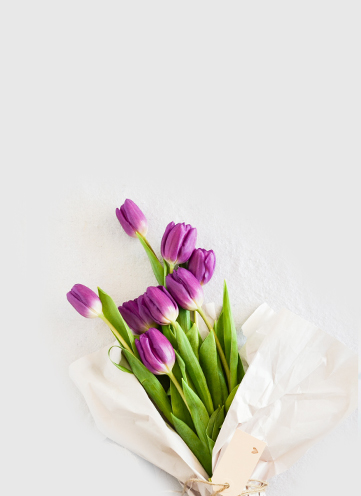Simple Care Tips for Your Bouquets
Posted on 26/06/2025
Simple Care Tips for Your Bouquets: Keep Flowers Fresh and Beautiful
Fresh bouquets add instant cheer, scent, and color to any space. Whether received as a gift, bought for yourself, or adorning a special event, maintaining the vibrancy and longevity of your flower arrangements doesn't have to be complicated. With a few simple care tips for your bouquets, you can enjoy their fresh beauty for much longer than you might expect.
Why Proper Bouquet Care Matters
Flowers are living things, and just like any other living organism, they need specific care to thrive. Properly caring for your bouquets at home will not only prolong their lifespan but also preserve their color, fragrance, and overall presentation. Neglecting their basic needs often results in wilting, drooping, or browning flowers within just a couple of days.
The Benefits of Caring for Bouquets
- Longer display life: Enjoy your fresh flowers for up to a week or more.
- Vibrant colors: Keep the hues looking as bright as when they first arrived.
- Fragrance preservation: Experience their delightful perfume for days.
- Better value: Make the most out of your purchase or gift.
- Reduce waste: Help the planet and your pocket by extending usability.

Main Causes of Wilt and Decay in Bouquets
Before diving into flower care techniques, it's essential to understand the main adversaries of cut flower longevity:
- Bacteria growth in water
- Lack of hydration to the stems
- Exposure to heat, drafts, or direct sunlight
- Suboptimal vase choices and dirty vases
- Failure to trim stems
- Ethylene gas exposure from fruits
Easy Step-by-Step Flower Bouquet Care Tips
1. Unwrap and Assess
As soon as your bouquet arrives home--whether from a florist, supermarket, or delivery--care begins immediately.
- Remove all packaging, plastic wraps, and rubber bands immediately.
- Check for wilted, broken, or diseased stems and leaves. Discard any damaged material.
2. Prepare a Clean Vase
Cleanliness is vital to keep your blooms healthy. Any residual bacteria can hasten decay.
- Wash your vase with warm, soapy water and rinse thoroughly.
- Wipe the inside with a diluted bleach solution (one teaspoon bleach per quart of water) if possible.
- Rinse again to remove chemical odors.
3. Fresh Water Matters
Always use fresh, lukewarm water for your floral arrangements, unless directed otherwise. Lukewarm water is absorbed faster than cold water and jumpstarts the hydration process.
- Fill the vase two-thirds full to ensure all stems are submerged.
- Change water every 2 days for optimal freshness.
4. Trim the Stems for Maximum Hydration
The most crucial step: Give each stem a new trim! Cutting the stems allows for optimal water uptake:
- Use sharp, clean scissors or a floral knife.
- Cut stems at a 45-degree angle. An angled cut prevents stems from sitting flat on the vase bottom, ensuring more surface area for water absorption.
- Re-trim every two or three days, especially when changing the water.
5. Remove Foliage Below Water Line
Leaves submerged in water rot quickly, leading to bacterial growth:
- Strip off leaves, buds, and thorns that would sit below the water level.
- Remove any dropped petals or plant matter during every water change.
6. Apply Flower Food Properly
Most store-bought bouquets come with a flower food sachet. This mixture contains sugar, acidifiers, and antibacterial agents.
- Dissolve the flower food in the vase's water, following the packet instructions.
- If you run out, you can make a homemade solution: mix 1 quart water, 2 tablespoons lemon juice, 1 tablespoon sugar, and 1/2 teaspoon bleach.
7. Choose the Best Display Location
Where you display your bouquet can dramatically affect its lifespan.
- Keep flowers in a cool area, out of direct sunlight.
- Avoid drafts, heaters, or air conditioning vents.
- Do not place near appliances, as heat will speed up wilting.
- Keep away from ripening fruit, which emits ethylene gas that hastens decay in many flowers.
8. Regularly Remove Spent Blooms
As some flowers expire, they release ethylene and may become moldy. Removing these extends the remaining bouquet's life.
- Check bouquets daily for spent flowers and wilted foliage.
- Remove these gently with clean hands or scissors.
9. Mist for Delicate Flowers
Certain flowers like orchids, hydrangeas, and roses appreciate light misting.
- Use a spray bottle with clean water to gently mist petals and leaves every morning.
- Be careful not to overdo it or soak the blooms; mist lightly.
10. Re-cut and Refresh
Every two days, make it a routine:
- Change the vase water.
- Re-cut the stem ends.
- Remove any decaying material.
- Wipe the vase and refill with fresh water and flower food.
Extra Tips for Specialty Bouquets
Care for Roses Bouquets
Roses are sensitive to bacteria and benefit greatly from angled cuts and immediate water changes.
Tip: If a rose head droops, re-cut the stem under water to avoid air bubbles, or try fully submerging the head for 30 minutes in lukewarm water.
Lily Bouquets
Lilies drop pollen that stains. Remove anthers (the yellow parts inside) gently as soon as they open to prevent mess. Change water daily, as lilies easily turn water cloudy.
Hydrangeas and Water Lovers
Hydrangeas, tulips, and peonies drink a lot, so monitor the water level. Refill as needed and trim ends every couple of days.
Hydrangea tip: If they start to wilt, submerge the entire bloom head in water for an hour to revive them.
Sunflower Bouquets
Sunflowers exude sap that clouds water. Rinse stems under running water before arranging and change the water frequently.
Sustainable Flower Care Practices
Caring for your bouquets extends their life and helps the environment by reducing waste. After your bouquet has reached the end of its display life:
- Compost spent flowers and greenery where local regulations allow.
- Dry select blooms to create potpourri or pressed flower art.
Common Flower Care Mistakes to Avoid
- Neglecting to trim stems: Ends seal after minutes in the air, preventing water uptake.
- Skipping water changes: Bacteria can double in hours and clog stems.
- Leaving leaves below water: Rapid decomposition breeds bacteria.
- Placing bouquets in direct sun: Excess heat speeds up wilting.
- Incorrect vase size: Crowding stems restricts water flow; too tall a vase prevents air exchange.
DIY Flower Care Solutions
If you've run out of commercial flower food, try these homemade options to enhance flower water:
- Sugar: Nourishes the blossoms.
- Lemon juice or vinegar: Lowers water pH, creating less hospitable conditions for bacteria.
- Bleach or vodka (a few drops): Acts as an antibacterial agent.
- Aspirin (crushed, uncoated): Said to promote water absorption and freshness.
Mix 1 teaspoon sugar, 1 teaspoon lemon juice, and a few drops bleach into 1 quart of water for a classic DIY preservative. Always dissolve ingredients thoroughly and change the solution every 2-3 days.
How to Revive Wilting Bouquets
Sometimes, despite your best efforts, flowers wilt prematurely. Here are some revival strategies:
- Re-cut all stems underwater.
- Soak entire stems (or in case of hydrangeas, their heads too) in a bath of lukewarm water for 30 minutes to 1 hour.
- Spritz the bouquet with water and remove to a cool, shaded area.

Frequently Asked Questions About Bouquet Care
How often should I change the vase water?
Every 1-2 days. This prevents bacteria build-up and keeps flowers hydrated and fresh.
Should I refrigerate my bouquets overnight?
Refrigerating bouquets can extend their life, especially for delicate blooms. If possible, place your vase in the refrigerator overnight (without fruits or vegetables) and bring them back to room temperature in the morning.
Is it okay to add pennies to the water?
The advice to add copper pennies is based on copper's antibacterial qualities. However, modern pennies often contain little copper, so results are mixed. Stick to proven methods like changing water and adding floral food for best results.
Why are my flowers wilting after one day?
Common causes are: failure to recut stems, use of dirty water/vase, exposure to heat, or ethylene gas from fruit.
Can I revive all types of wilted flowers?
Some flowers, such as tulips and hydrangeas, are easier to revive than others. Brown or slimy stems and petals are usually beyond saving, but for others, try the re-cutting and soaking technique described above.
Conclusion: Enjoy Long-Lasting, Gorgeous Bouquets
With these simple care tips for your bouquets, you can truly maximize the beauty and life of your fresh flower arrangements. A few minutes each day spent on proper trimming, hydrating, and cleaning can add days--sometimes more than a week--to the vibrancy of your blooms.
Remember: Fresh water, clean vases, and careful maintenance are key. Not only will you enjoy stunning displays, but you'll also foster a more sustainable approach to flower enjoyment at home.
For more advice on bouquet care, follow seasonal updates from your local florists or garden experts, as different flowers benefit from slightly varied routines. Show your thoughtful attention with these easy techniques, and let your bouquets brighten your home for days to come!
Latest Posts
Long-Lasting Floral Wonders: Top 12 Must-Have Flowers
Hydrangea Happiness: Your Care Companion
Unlock Your Orchid's Potential with Our Comprehensive Care Instructions
Vibrant Messages: Understanding Peony Flower Color Symbolism





